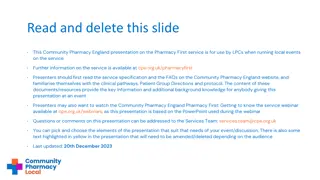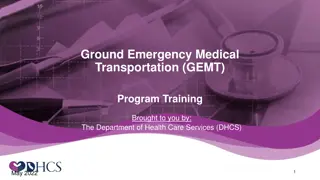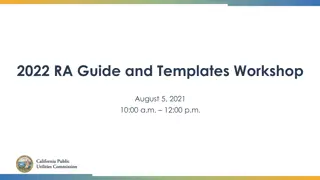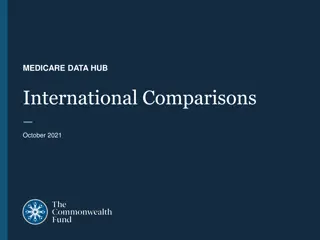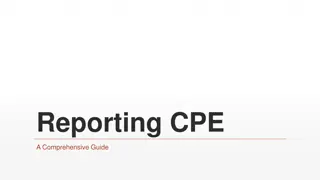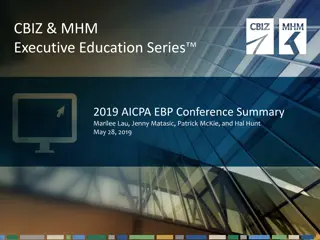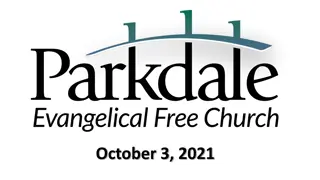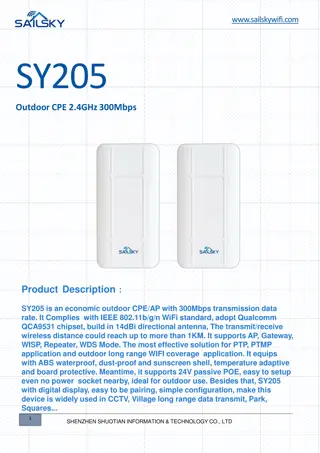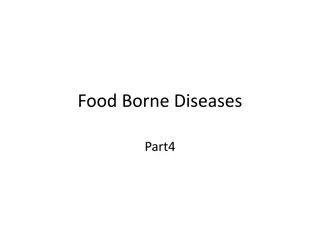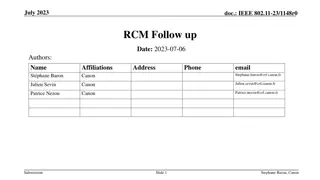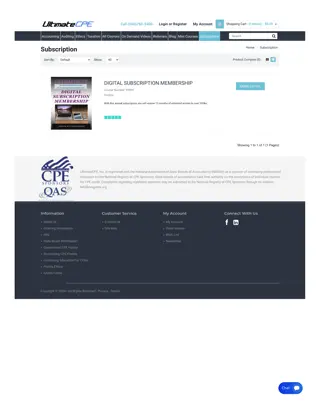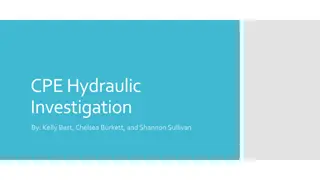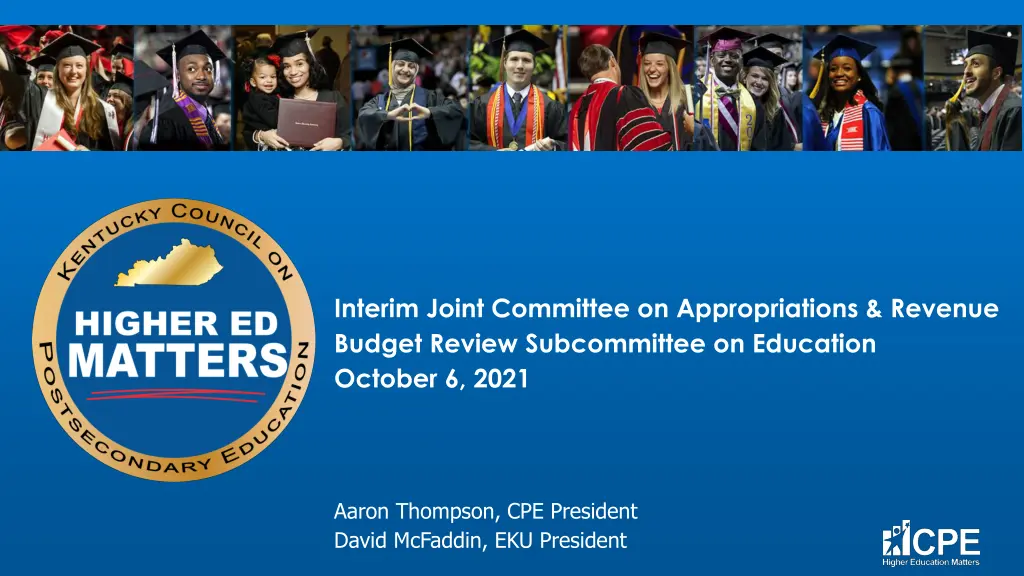
Kentucky Postsecondary Education Update: Achievements and Trends 2021
Stay informed on the latest developments in Kentucky's postsecondary education sector, including proposed regulatory relief measures, the lowest tuition increases in over two decades, growth in underrepresented minority degrees, academic achievements, and advancements in STEM+H credentials.
Uploaded on | 1 Views
Download Presentation

Please find below an Image/Link to download the presentation.
The content on the website is provided AS IS for your information and personal use only. It may not be sold, licensed, or shared on other websites without obtaining consent from the author. If you encounter any issues during the download, it is possible that the publisher has removed the file from their server.
You are allowed to download the files provided on this website for personal or commercial use, subject to the condition that they are used lawfully. All files are the property of their respective owners.
The content on the website is provided AS IS for your information and personal use only. It may not be sold, licensed, or shared on other websites without obtaining consent from the author.
E N D
Presentation Transcript
Interim Joint Committee on Appropriations & Revenue Budget Review Subcommittee on Education October 6, 2021 Aaron Thompson, CPE President David McFaddin, EKU President
Overview Postsecondary Education Update Proposed Regulatory Relief Measures 2
Postsecondary Education Update Lowest tuition and fee increases in over 20 years Making great progress closing achievement gaps STEM+H degrees and credentials are growing at unprecedented rates Number of short-term certificates awarded on the rise (grew by 9.5% in 2020) High school students taking dual credit courses increased by 10.0% in 2020 (75% increase over past six years) 3
Postsecondary Education Update Lowest Tuition Increases in Decades Kentucky Public Postsecondary System Average Annual Change in Resident Undergraduate Tuition and Fees Academic Years 2002-03 Through 2021-22 In the early 2000s, CPE devolved responsibility for tuition setting to campus governing boards 18.0% 10.8% AAGR 3.4% AAGR 16.0% 16.0% 15.4% 14.0% Impact of CPE Tuition and Fee Ceilings Increases in tuition and fees averaged over 10% per year between 2003 and 2010 12.8% 12.0% 11.6% 10.0% 9.8% 8.7% 8.0% 8.0% The Council has adopted tuition ceilings every year since 2010, with an average rate of growth of 3.4% 6.0% 6.1% 5.8% 5.4% 5.2% 4.0% 4.5% 4.5% 3.7%3.5% 3.2% 3.1% 2.0% 2.0% 0.7% 1.2% 0.0% 2009-10 2021-22 2002-03 2003-04 2004-05 2005-06 2006-07 2007-08 2008-09 2010-11 2011-12 2012-13 2013-14 2014-15 2015-16 2016-17 2017-18 2018-19 2019-20 2020-21 Average increase the past two years is below 1.0% Percent Change from Prior Year 4 Source: Council on Postsecondary Education, Comprehensive Database. AAGR = Average Annual Growth Rate
Postsecondary Education Update Growth in URM Degrees and Credentials Between 2016 and 2020, KCTCS degrees and credentials awarded to URM students increased by 1,339, or by 40% This represents an average annual growth rate of 8.8% in URM degrees and credentials Between 2014 and 2020, bachelor s degrees awarded to URM students grew by 774 degrees, or by 40% The research sector accounted for 71% of that increase, with URM degrees growing by 62% at the research universities and by 22% at comprehensive universities 5
Postsecondary Education Update Growth in STEM+H Degrees and Credentials Between 2016 and 2020, STEM+H degrees and credentials at KCTCS increased by 3,100 awards, or by 29% This represents an average annual growth rate of 6.6% in STEM+H degrees and credentials Between 2014 and 2020, STEM+H bachelor s degrees grew by 1,550 degrees, or by 30% The research sector accounted for 63% of that increase, with STEM+H degrees growing by 45% at the research universities and by 20% at comprehensive universities 6
Proposed Regulatory Relief Measures Vendor Forms: Modify KRS 45A.695 to eliminate the requirement for vendors to complete and sign Personal Service Contract (PSC) invoices. Student IDs: Modify KRS 61.931(6)(d). It triggers security incident procedures unnecessarily, since student ID numbers protect against misuse of personal information. Open Records: Match KRS 61.880 language, the appeal timeline for open records requests, with KRS 61.846, the 60- day appeal timeline for open meetings. 7
Proposed Regulatory Relief Measures (Contd) Disposal of Property: Make existing budget language permanent, regarding real property sale proceeds returned proportionately to the funding source. Printing: Exempt the institutions from KRS 57.091, which requires Governor s approval of all state printing contracts. Modify Tuition Waivers: Make tuition waivers last dollar scholarships by requiring students to apply for federal and state aid. 8
Proposed Regulatory Relief Measures (Contd) Lease Reporting: Increase threshold on capital lease reporting to Capital Projects and Bond Oversight Committee from $100,000 to $200,000 (consistent with the $200,000 threshold for inclusion in biennial budgets). Lease Terms: Allow more flexibility on lease terms, including extending the number of optional renewal terms. Allow the universities and KCTCS to waive the state s thirty-day cancellation requirement. 9
Proposed Regulatory Relief Measures (Contd) Capital Projects: Increase the Capital Projects and Bond Oversight Committee capital project reporting threshold for public institutions from $1.0 million to $2.5 million. COVID-19 Immunity: Provide public institutions immunity from claims related to taking reasonably necessary actions to comply with federal, state, or local guidance to diminish the impact of COVID-19. 10
Questions? Twitter: CPENews and CPEPres Facebook: KYCPE Website: http://cpe.ky.gov

